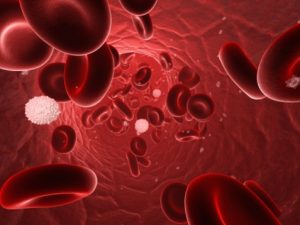 Iron is essential for red blood cells, but too much iron has been found to contribute to cell damage. A new study found that administered iron can lead to cell damage within 10 minutes. The findings suggest that doctors must pay close attention when prescribing iron treatments – either through tablets or injections – as it could have harmful effects on the body.
Iron is essential for red blood cells, but too much iron has been found to contribute to cell damage. A new study found that administered iron can lead to cell damage within 10 minutes. The findings suggest that doctors must pay close attention when prescribing iron treatments – either through tablets or injections – as it could have harmful effects on the body.
Iron’s main role is transporting oxygen. Low levels of iron – anemia – is associated with tiredness and fatigue.
Advertisement
The study examined human endothelial cells that line blood vessels, adding either a placebo or 10 micromolar of iron to the cells. Within 10 minutes of receiving the iron, the cells activated DNA repair, which lasted up to six hours after the iron was administered.
Senior author Dr. Claire Shovlin said, “We already knew that iron could be damaging to cells in very high doses. However, in this study, we found that when we applied the kinds of levels of iron you would find in the blood stream after taking an iron tablet, this also seemed to be able to trigger cell damage — at least in the laboratory. In other words, cells seem more sensitive to iron than we previously thought.”
“This is very early stage research, and we need more work to confirm these findings and investigate what effects this may have on the body. We are still not sure how these laboratory findings translate to blood vessels in the body,” Dr. Shovlin added.
“We’re not at the stage yet where we would advise doctors to change their approach to prescribing iron supplements. Many people need extra iron — it is crucial to allow our bodies to function properly — and anyone with any concerns about their iron supplements should talk to their healthcare provider.”
“However, this study helps to open the conversation about how much iron people take. At the moment, each standard iron tablet contains almost 10 times the amount of iron men are recommended to eat each day – and these dosages haven’t changed for more than 50 years. This research suggests we may need to think more carefully about how much iron we give to people, and try and tailor the dose to the patient,” Dr. Shovlin concluded.
Sources:
http://www.eurekalert.org/pub_releases/2016-02/icl-iit021016.php
